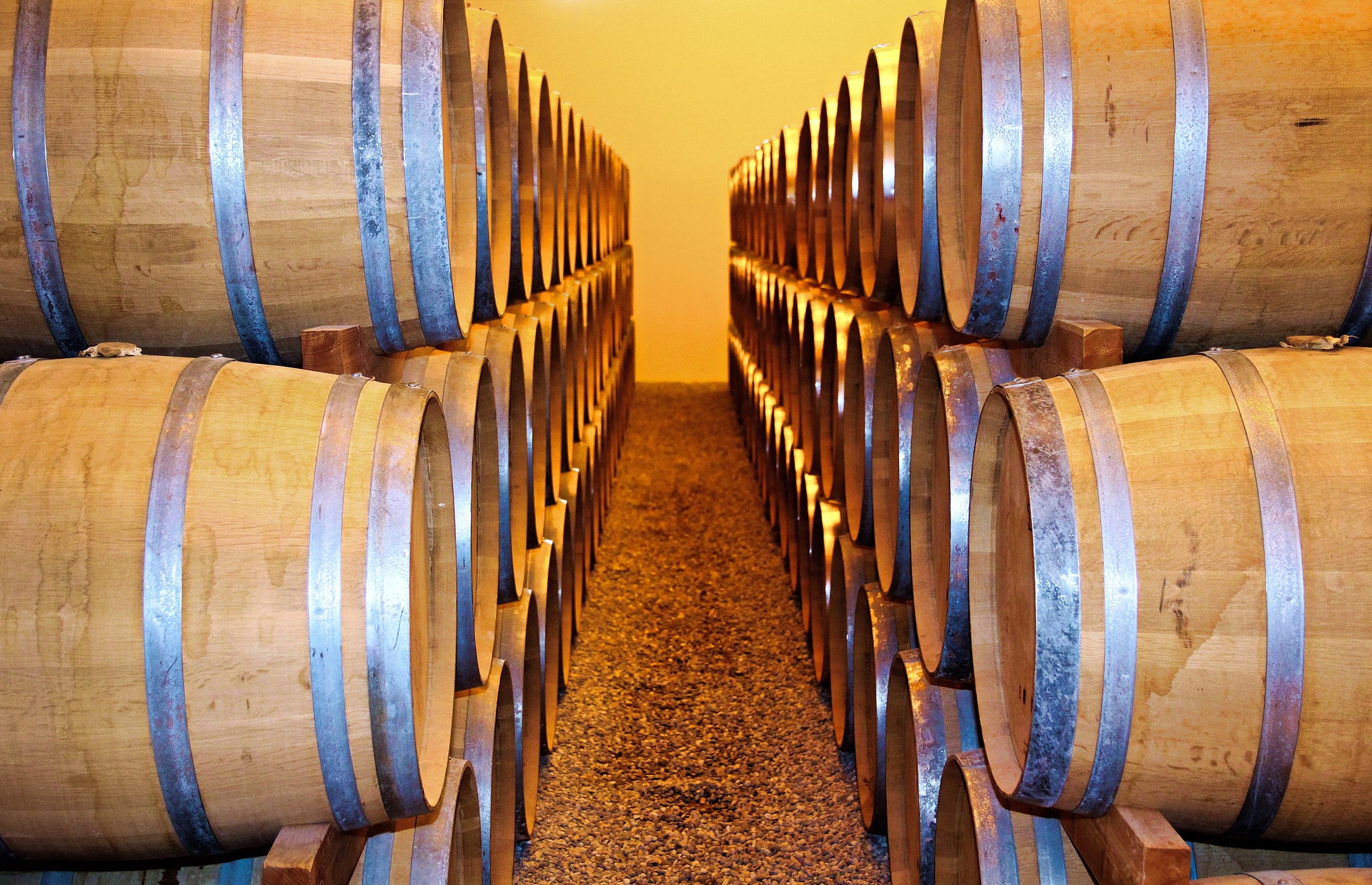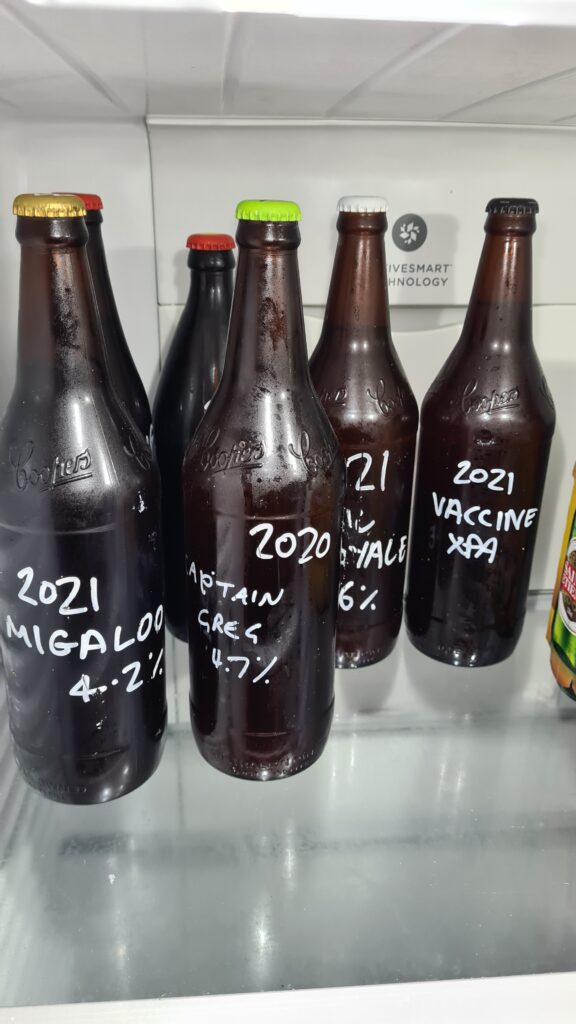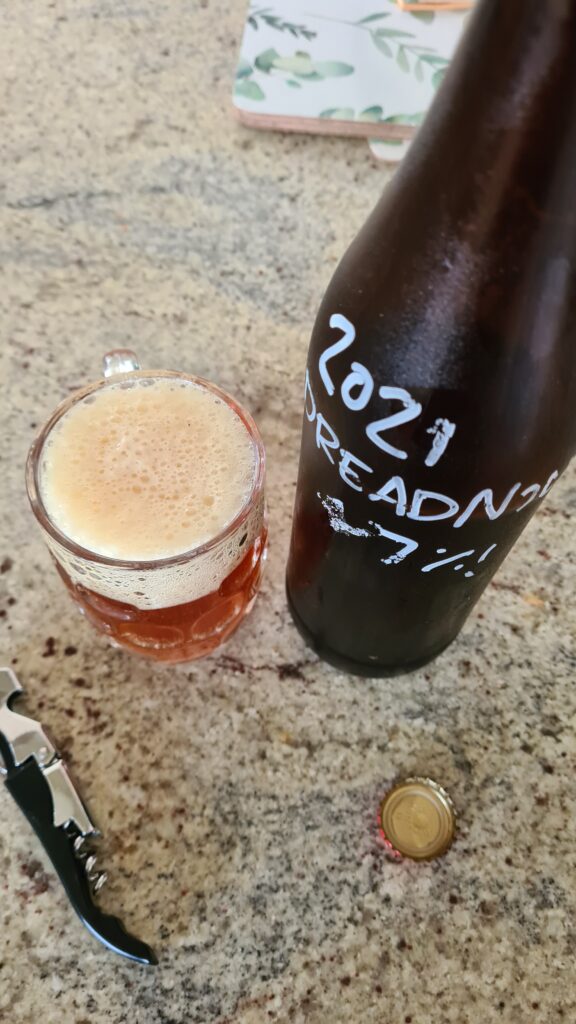I recently found a long forgotten crate of home brew beer that I had stashed under my parents house. There were a few different styles in there: pale ale, XPA, blonde ale, wheat beer and even some homemade cherry wine (fortified with grain alcohol). These beers were all from 2020-21 which means at the time of writing they were 2 – 3 years old.
I certainly did not want to throw the beers away, so I stuck them in the fridge for a few days and have been working my way through them. Some of the beers lasted better than others. For example the XPA tastes more or less like it did 2 years ago, while the wheat beer and blonde didn’t last as well.
This got me thinking: how long will beer last after it has been bottled? Despite brewing as a hobby for some years, my beer generally doesn’t last longer than a few months after bottling. So with a bit of research and some sampling of my old beers, I decided to share some information on the topic.
What happens to old beer?
Unless you’ve made some very serious errors in sanitising your gear, it is very unlikely that old beer will make you sick. Usually, the worst that can happen is a beer that tastes stale or funky. Let’s have a quick look at some of the most common things that happen to old beer.
If your beer is getting old, one of the first things that is likely to happen is a dampening of the hop aromas and flavours. Hops is obviously one of the key flavours in most beer styles and as your beer gets older the aromatics of the hops seems to disappear a bit. This was very much true with my 2 year old pale ale that I tasted. The beer itself was still very drinkable and had the right level of bitterness, but I couldn’t taste the flavour of the hops.
Another common issue with old beer is your brew becoming stale. The taste of stale beer is a little tricky to describe, but it’s unmistakable when you taste it. Stale beer just tastes “off”. Not so much a funky or rank taste, just a little…off.
Beer exposed to light and other adverse conditions through improper cellaring or bottling can also lead to skunked beer. Again this flavour is a little hard to describe, but unmistakable when you taste it. Skunked beer is usually bitter and tastes a little like sulphur. It’s best not to drink skunked beer (although as far as I can tell, it’s not actually dangerous to drink).
Finally, there are a bunch of other off flavours that may develop in old beer – particularly if you weren’t careful with sanitation during brewing or bottling. Depending on what’s going on inside the bottle, off flavours may include a cabbage, wet cardboard or even sewage type taste.
How long does beer last?
So, you’ve brewed a beer, or picked some up from your favourite store…how long can we keep this beer? Like so many answers in brewing, the answer is ”it depends”. First, the “brewing” process isn’t really finished until your beer is conditioned. As a homebrewer, this usually means a month or so after it has been packaged. The beer needs time to mellow, carbonate and mature. Once this process is complete, the clock is ticking.
Unlike some wines, which develop wonderful flavours over time, beer is generally enjoyed “fresh”. Following conditioning, it is best to enjoy your beer within 6 months. You will usually still get good flavours up to a year after. There are exceptions of course: some sours and other beers (mostly Belgian/ European styles) will continue to develop their flavour for months or even years after brewing. It is not uncommon when drinking a beer in Brussels to come across a bottle that’s a couple of years old (and very tasty!)
The story of IPA
We’re going to take a slight detour here to talk about the history of Indian Pale Ale (IPA). It’s an interesting story that helps us brewers understand how to make beer last longer.
Like all good stories, the history of how IPA was invented is steeped in half truths, and legend. Many years ago, Britain had a vast overseas empire. A crucial part of this empire was India which had a British rule commercial or presence for approximately 200 years up to 1947. At this time, India supplied a vast amount of resources to Britain including rubber, timber, tea, rice etc.
In the 18th Century, British troops, merchants and sailors living in India were really missing something from home: beer! The story goes that the Brits realised that by making their beer very strong and adding a lot of hops, it would survive the long sea voyage to India. So, the beer was brewed in England (the first IPA was probably brewed at East London’s Bow Brewery). There were no significant commercial barley and hop crops in the time in India, so importation remained the best option.
Many historians question some parts of the IPA origin tale, but it is a fun story nonetheless. Regardless of the exact facts, this story does teach us something as brewers: how to make our beer last longer.
How to make our beer last longer
If you are making homebrew faster than you can drink it, here are some tips for making the shelf life a little longer.
- Sanitise. You should be sanitising your gear and bottles to a high standard regardless of how long you want your beer to last. If you want to give your beer the best chance at lasting, be militant with your sanitation. Don’t leave room for any unwanted bugs to develop.
- Store beer correctly. Bottle your beer in the darkest glass you can find and cellar at an appropriate temperature away from sunlight. Cold storage can be a good option too if you are lucky enough to have a space to do this (like an old fridge).
- Bump up the ABV. Adjust your recipe to increase alcohol content. This will inhibit growth of the things that will make your beer taste weird over time.
- Hops, hops, hops. Brew styles with lots of hops. Hops are a natural preservative, so if you’re serious about making your beer last, add hops whenever you can (bittering, flavouring, dry hopping, double hopping etc.)
What to do with spoiled beer?
Having a batch of spoiled beer can be frustrating…but there’s no reason it should go to waste. If your beer is so old that it has become undrinkable, here’s a few things you can do with it rather than pouring it down the drain.
- Distil it. Beer can be distilled down to extract the alcohol into a spirit. Without getting too far into the science of distillation, off flavours shouldn’t affect the final product or distillate (i.e. alcohol). Remember that distilling spirits is illegal in many countries and can carry massive fines and even jail sentences – so check your local laws before attempting. Also, distilling alcohol creates some very dangerous by-products, so be very, VERY careful when distilling. It should only be attempted by a professional.
- Pest control. If you have a vegetable patch, you probably know how annoying and destructive snails and slugs can be. A natural, chemical free way to control these guys in your garden is by half filling a cup with your beer and burying in your garden bed up to the rim of the cup. Snails are attracted to the beer and will drop into the glass and perish.
- Shampoo. This is a weird one, but a friend of mine swears by it. Leave old beer out in a jug to de-carbonate the use in place of regular conditioner after using shampoo in the shower. I’ve never tried this myself but there are people who swear that it makes their hair much softer – particularly in places where the tap water is very hard.
Beer is generally best enjoyed within 6 months of packaging and conditioning. If you think your beer will need to last in the cellar longer, consider brewing styles with higher hop and alcohol content. Your beer will also last longer if your sanitation is prioritised.
Cheers!
Read next: 7 Ways To Cool Beer Without A Fridge, The Science Behind Beer Koozies: How They Keep Your Beverage Cold! and Proven Ways To Chill Your Beer Fast






